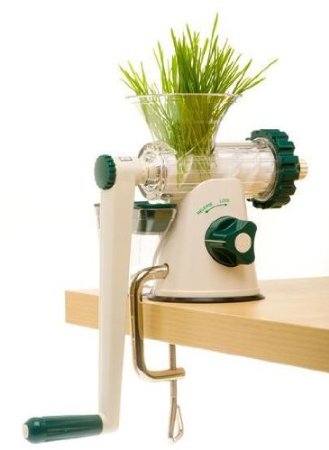There are two basic categories of juicers, centrifugal and masticating. Deciding what kind of juicer to get depends a lot on what you'll be juicing. Questions to ask yourself are:
- Will I be juicing leafy greens? Wheatgrass?
- How important is time? How fast do I want my juicer to juice?
- How much time do I want to spend on prep work? Cleaning?
- How much money do I want to spend?
Masticating juicers have a much smaller opening, so food will need to be cut into smaller pieces before juicing. They're also much slower to produce juice, but can often produce more juice for the same amount of produce. They are great for juicing oranges and other citrus as well as leafy greens including wheatgrass. If you are planning on juicing wheatgrass, you can also get a hand crank wheatgrass juicer pretty inexpensive.
Whether you choose a masticating or centrifugal juicer, one thing I like to do to get more juice is to run the pulp through the juicer once. For a centrifugal juicer, you can just ball up the pulp and run it back through the juicer, and for a masticating juicer I just send it back through the shoot. This doesn't work for wheatgrass juice, though, because wheatgrass pulp comes out pretty dry the first time through. I compost my pulp, but there are also recipes online to make raw, dehydrated crackers out of them, too.
These are the three juicers that we have. I use our centrifugal juicer more because of the speed, and Scott uses our masticating juicer more because of the benefits. All orange juice is made in our masticating juicer, too, including our Nature's Kool Aid juice.







 RSS Feed
RSS Feed
